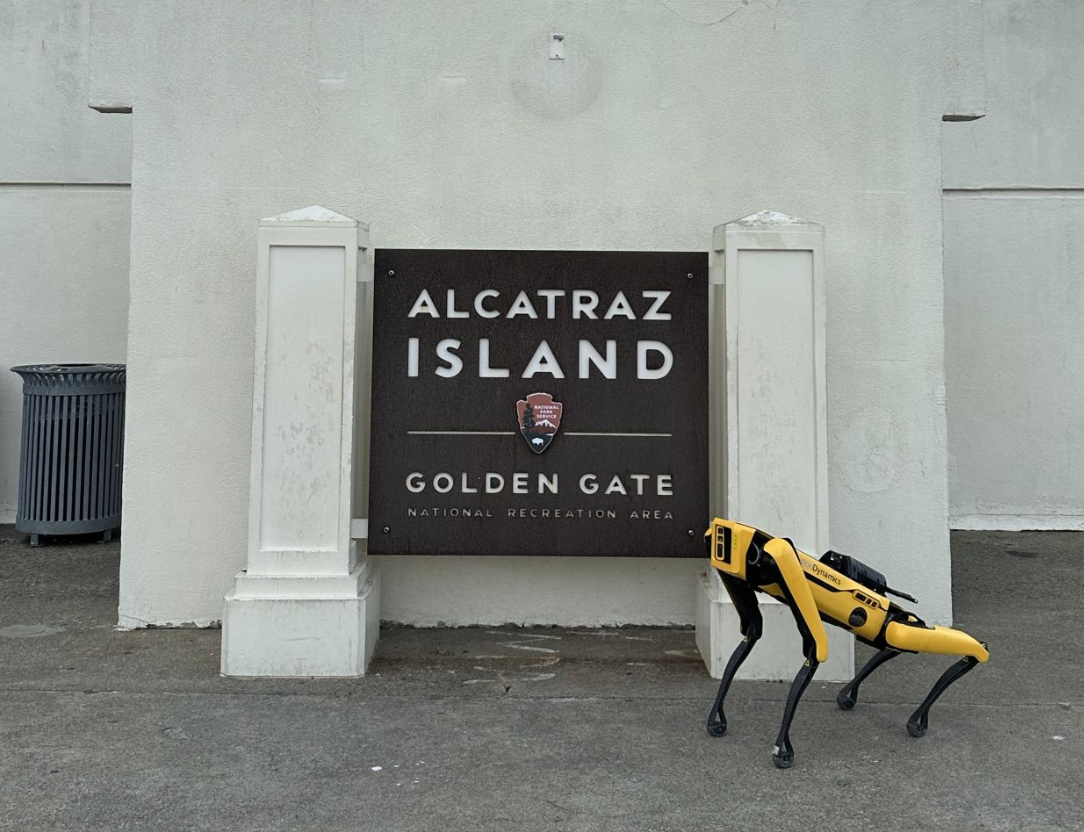
Taking Spot to Alcatraz: Pushing the Limits of Autonomous Walking Robotics
Taking Spot to Alcatraz: Pushing the Limits of Autonomous Walking Robotics
When people think of Alcatraz, they picture the infamous island prison shrouded in fog, its history rich with tales of escape attempts and notorious inmates. But for those of us working at the intersection of robotics and AI, Alcatraz represents something else entirely—a proving ground for cutting-edge technology.
Recently, I had the incredible opportunity to visit Alcatraz with Pete Kelsey, Jeremy, and our robotic companion, Spot, as we pushed the limits of autonomous mapping and exploration in one of the most challenging environments imaginable.

![]() Why Take Spot to Alcatraz?
Why Take Spot to Alcatraz?
Alcatraz’s decaying infrastructure, unpredictable terrain, and limited accessibility make it a perfect testing ground for autonomous robots. Our mission was to deploy Spot, Boston Dynamics’ agile quadruped robot, equipped with advanced LiDAR scanning technology powered by Hovermap, to capture detailed 3D scans of the historic site.
This endeavor wasn’t just about testing Spot’s capabilities; it was about preserving history. Alcatraz is eroding, and accurate 3D mapping can help document its condition for future restoration and digital preservation efforts.
How Spot Made Our Operations Safer
One of the biggest advantages of using Spot for scanning was its ability to operate in hazardous environments without disturbing dangerous materials. Unlike humans, Spot doesn’t kick up asbestos, dust, or other harmful particulates, making it an ideal solution for surveying aging infrastructure while keeping our team safe.
How We Did It
Deploying Spot in a location like Alcatraz requires meticulous planning. Here’s how we executed the mission:
- Pre-Deployment Planning: We worked closely with experts in historical preservation and robotics to determine the key areas for scanning. Given the restrictions on the island, we had to be strategic in how and where Spot could operate.
- Equipping Spot with Hovermap: Hovermap’s advanced LiDAR sensor enabled Spot to autonomously navigate and generate high-resolution 3D maps of its surroundings, even in low-light or GPS-denied environments.
- On-Site Execution: Spot traversed the uneven, crumbling floors of the prison, scanning areas that would have been dangerous or impossible for humans to access. The data collected was instantly processed, revealing stunningly accurate reconstructions of Alcatraz’s interiors.

Kyle Hulse, Pete Kelsey, Jeremy & Team
The Impact of Robotics on Digital Preservation
Beyond the sheer thrill of deploying a robot in one of the world’s most famous locations, this mission underscored a growing trend: autonomous robotics and AI are revolutionizing digital preservation.
- Historical sites can now be scanned with millimeter accuracy, ensuring that even if structures deteriorate over time, their digital twins remain intact for research and restoration.
- Robots like Spot can access hazardous locations, reducing risks for human surveyors and archaeologists.
- LiDAR technology enhances data collection, enabling more precise reconstructions than traditional methods.
Thank You & Stay Tuned
I’m grateful to have been part of this experience alongside Pete Kelsey and Jeremy, and I can’t wait for what’s next in the world of robotics and AI-driven discovery. A huge shoutout to Pete Kelsey’s incredible project of scanning the entirety of Alcatraz Island—stay tuned for more updates!
Stay Connected
Want to learn more about AI, robotics, and real-world applications of autonomous technology? Follow my journey at KyleHulse.com and connect with me on LinkedIn for the latest insights in the field.